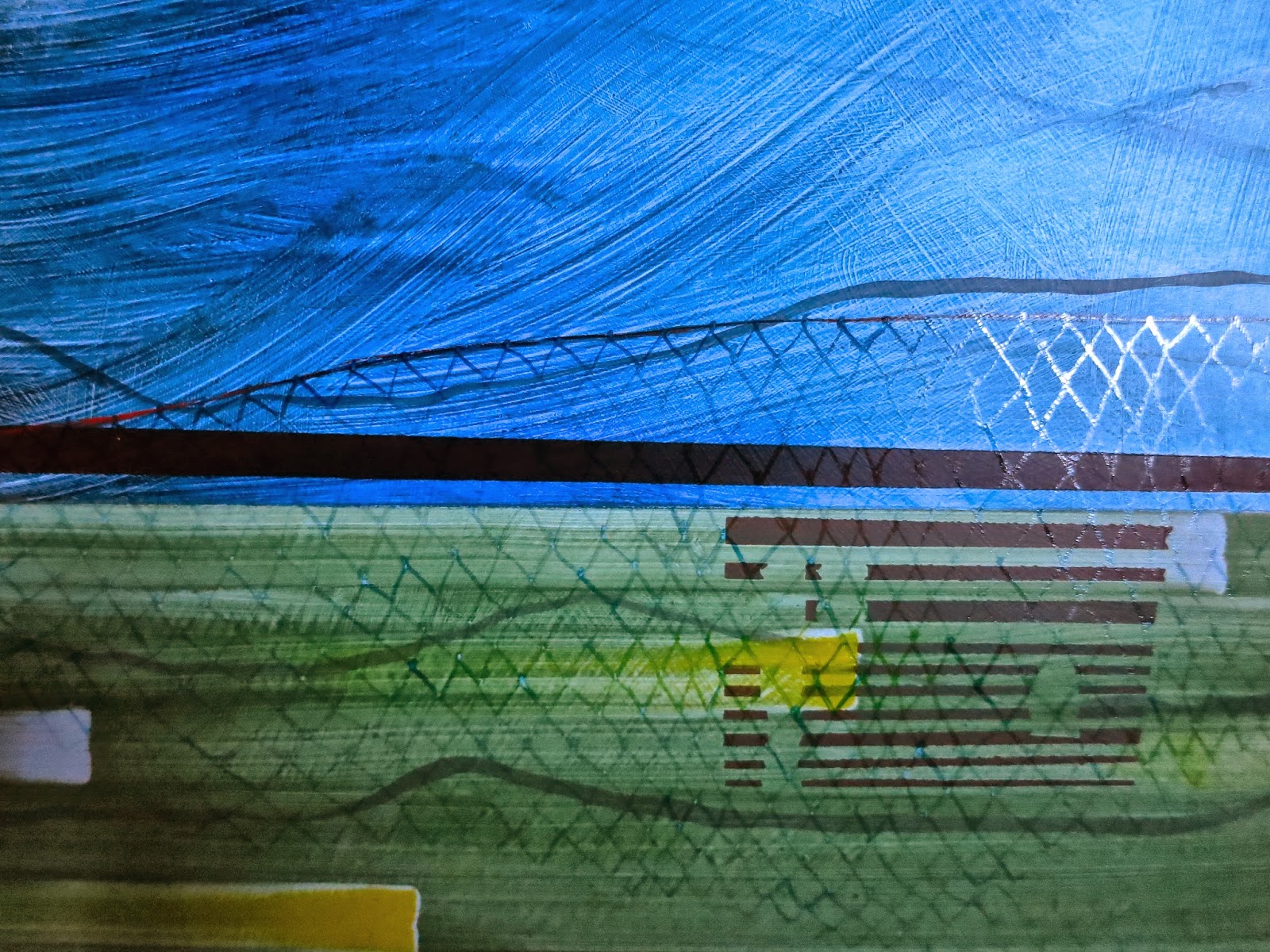16" x 100" (61cm x 255cm) oil on board (for the most part)
Saturday 26 April 2014
Friday 25 April 2014
Green Line - panel 5
Panel 5 presents the barbed wire unravelling. Unrealistic, perhaps, but more worth working towards than the alternative.
Thursday 24 April 2014
Wednesday 23 April 2014
Green Line - panel 3
Tuesday 22 April 2014
Green Line - panel 2
Monday 21 April 2014
Green Line - panel 1
Panel 1 is a close-up of a green line, so close it is pixelated. What is within a line? Is it, in an of itself, something?
Saturday 19 April 2014
Green Line
The 1949 armistice boundary between Israel and the West Bank was drawn on a map in green ink. Cyril Radcliffe, a British official, thus created the first "green line", which also became the internationally accepted border. The second "green line" cuts across Cyprus. cleaving its major city in half. In that case, another British official made another green line. That time the line was drawn with a green pencil, but no less difficult to erase than ink. What is neat and clean on a map is messy and heart-rending for families and communities.
The panels of the Green Line paintings focus on the arbitrariness of these kinds of divisions. Nothing about arbitrary action sits well with people, especially if they have been harmed with no redress.
This is the finished piece. It is 16" x 100" (41cm x 255cm) oil on board.
In subsequent posts I will present the panels individually, along with some process.
The panels of the Green Line paintings focus on the arbitrariness of these kinds of divisions. Nothing about arbitrary action sits well with people, especially if they have been harmed with no redress.
This is the finished piece. It is 16" x 100" (41cm x 255cm) oil on board.
In subsequent posts I will present the panels individually, along with some process.
Thursday 10 April 2014
Monday 7 April 2014
Friday 4 April 2014
Thursday 3 April 2014
Tuesday 1 April 2014
Subscribe to:
Posts (Atom)














































